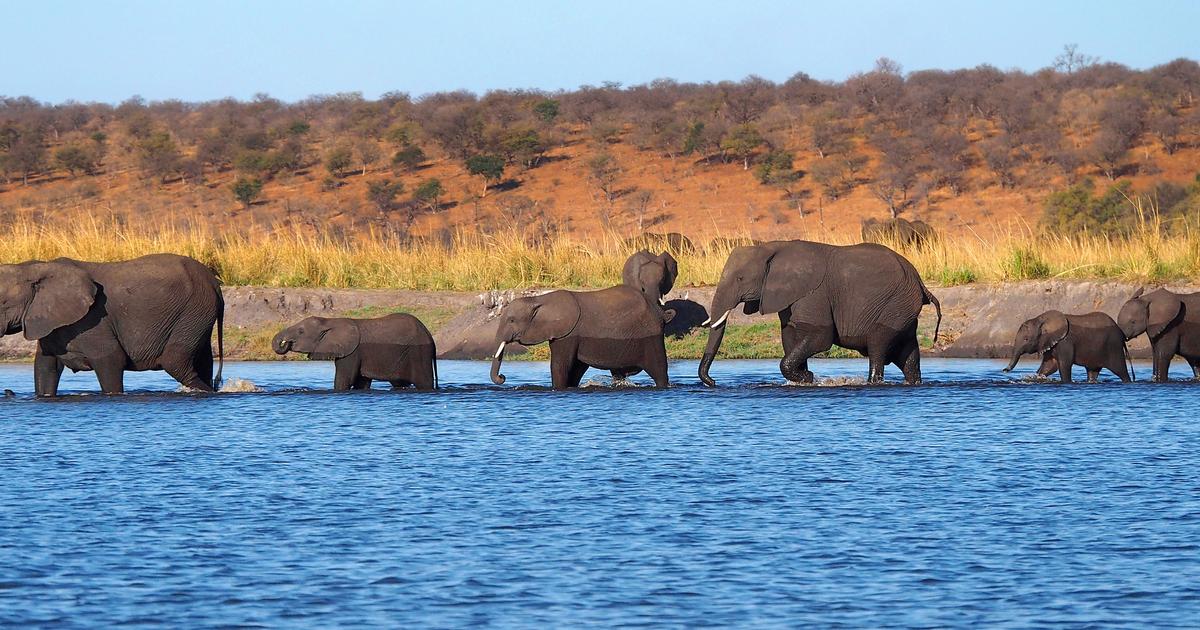Enlarge image
Four meter high model of a European forest elephant: up to 13 tons heavy
Photo: Jan Woitas / dpa
It was a remarkable joint effort and was able to secure food for several weeks to months: Neanderthals hunted European forest elephants in Central Europe - the largest land mammal in recent geological history.
A research team led by Sabine Gaudzinski-Windheuser from the University of Mainz is presenting clear evidence of this for the first time in the journal Science Advances.
The analysis also shows how expertly Neanderthals gutted the giant carcasses some 125,000 years ago.
And it contradicts some assumptions about the way of life of our extinct cousins.
Preserved with gut content
European forest elephants (Palaeoloxodon antiquus) roamed Europe and western Asia about 800,000 to 100,000 years ago.
With a shoulder height of up to four meters and a weight of up to 13 tons, bulls of the species were much larger than woolly mammoths or African elephants.
Bones of these primeval giants have been discovered repeatedly in Germany, sometimes with cut marks.
However, it remained unclear for a long time whether Neanderthals - at that time the only humans in Europe - actually killed the animals or whether they gutted animals that were already dead.
This question is now answered by the analysis of the world's largest collection of European forest elephants from the Neumark-Nord site, about ten kilometers south of Halle.
The remains of around 70 such animals were discovered there at the end of the 20th century while working in a lignite mine.
The elephants lived around 125,000 years ago in what was then the lake landscape and were preserved in excellent condition – in some cases down to the contents of their intestines.
Earlier investigations had already shown that these were almost exclusively adult animals, with a clear surplus of bulls.
"The age structure and gender distribution could not be explained at first," said researcher Gaudzinski-Windheuser.
After the archaeologist discovered cut marks on individual bones, the team examined the remains of 57 elephants more closely.
Interesting for the specialist team: Male forest elephants, like today's elephants, were probably more of a loner and therefore not protected in a herd.
This may have made them attractive targets for hunters - and explain the increased occurrence of remains of male animals.
Another argument in favor of the hunt is that the elephants were butchered immediately after they died, even before carnivorous animals got to work on them.
"All 57 carcasses show the same pattern," says Gaudzinski-Windheuser.
"There's no other way to explain it."
Neanderthals probably practiced hunting forest elephants in the region studied for at least 2000 years, i.e. quite continuously for dozens of generations, reports the specialist team.
Both the hunt for the elephants and the gutting of the prey required the cooperation of many individuals.
The regular cutting patterns on the bones reveal how skillfully the Neanderthals detached the meat from the bones and also removed the coveted fatty foot pads.
Meat supplies for at least three months
The researchers calculate that it would have taken 25 Neanderthals three to five days to gut an animal.
According to their calculations, a ten-ton elephant delivered at least 2,500 servings of 4,000 kilocalories each.
If Neanderthals had actually lived together in groups of a maximum of 25 individuals – as is often assumed – they would have had stocks of meat for at least three months.
The community therefore had to conserve the loot and store it for a long time, the experts conclude.
But it is also possible that, at least temporarily, a large number of Neanderthals came together to dine extensively.
It is still unclear exactly how the animals now being examined were killed.
Gaudzinski-Windheuser refers to the discovery of a forest elephant in Lehringen in Lower Saxony from that time: the remains of a wooden spear lay between its bones.
In a comment in Science Advances, archaeologist Britt Starkovich of the University of Tübingen, who was not involved in the study, writes that the cited evidence for forest elephant hunting is "compelling."
"Neanderthals knew what they were doing," says the researcher.
"They knew what individuals to hunt, where to find them, and how to launch an attack."
jme/dpa


/cloudfront-eu-central-1.images.arcpublishing.com/prisa/4RITWNCKAZFB3I3MBXYYKH6YDI.jpg)










